For the first time in years, there are many more questions about this economy than there are answers. We are in the midst of an historic era of uncertainty where there does not seem to be a majority of economic experts who essentially believe in the same fiscal or monetary parameters. Just the fact that an estimated half of experts and citizens alike expect a recession and the other half does not makes for more uncertainty.
Many are convinced we are headed for a recession. After all, GDP growth in the U.S. was negative 1.5 percent in the first quarter. It is unlikely that changed much in the second quarter. Some economists call a recession after two straight quarters of zero growth. My rule of thumb is three quarters or even an entire four quarters of non-GDP growth.
Others maintain there are no recessionary indicators out there since the U.S. consumer is alive and well. . .or at least it was. Different parts of the consumer economy collapsed in May and June.
Significant increase in the costs of fuel, used cars, energy, utility services, food, labor and interest rates have vaulted inflation in some places in the U.S. by over 40 percent. The fear is these rising costs will cause a recession later in 2022 or 2023 as the consumer will be reluctant or unable to absorb these additional costs of living. However, at this point, it's not enough to spark a recession.
The stock market has underperformed, but, as mentioned, consumerism is strong if buyers can find what they want in a marketplace riddled by a limping supply chain, but especially a limited number of choices. The U.S. is stuck in an age of scarcity. Last time we saw that was during WWII.
The U.S. dollar reached a new 20-year high this spring as risk-off sentiment stemming in part from concerns over the Federal Reserve's ability to combat high inflation boosted the greenback's worldwide safe-haven appeal.
According to reports, the U.S. central bank and Atlanta Fed President Raphael Bostic had hoped for nothing more than a half-percentage-point interest hike. Too late now. In June, Fed officials agreed to a 0.75-percentage-point rate rise.
While many are expecting a recession, there are also significant signs that support the opposite. In June, airports roared back to life as the lifting of COVID restrictions created a powerful statement that this economy might not be headed for a recession. Thousands of flights were delayed or canceled in mid-June as airlines could not handle the emerging load, caused by a lack of pilots or air personnel among other factors. Many airlines have not staffed up to levels pre-COVID.
Those millions have to be going somewhere, and currently passengers are paying up — with steep increase in ticket prices — because there seems to be a green flag with regard to COVID, and they are ready to travel.
Many are going on vacation (it is summer, by the way) because of a slowing virus. Business travel is returning as customers and suppliers are slowly returning to the office. A surge in air travel is as far away from a recession as an economy can get.
What about the so-called cratering of housing starts? According to Forbes this spring, new home construction starts jumped 6.8 percent in February, and a whopping 22 percent compared with the same time a year ago. That’s the fastest growth rate in residential building since 2006, according to Census data.
New housing construction with five or more units was even more robust, rising 37.3 percent compared with 2021, while housing completions also jumped 5.9 percent from January and 2.8 percent from a year ago.
What, slow the economy? No fed or state official has officially declared an intent to slow the economy. Regardless, the economy in the South and nationwide has been sluggish with all kinds of issues such as inflation and worker shortages.
Yet, if you look at the data, this is not a bad time for the economy to slow. If anything, the COVID recovery was white hot, too hot to last. That situation is long gone now and job creation is slowing to a trickle.
Why is this a good time (if there ever is such a thing) for the economy to slow? Changing demographics indicate that there is little chance for anything else.
For example, the United States is not seeing a backfill of labor to replace those millions of baby boomers aging out of the workforce. We cannot replace those workers because the acceptance of refugees is essentially a thing of the past, and legal as well as illegal immigration into the U.S. has fallen dramatically. Add the fact that the country just saw its worst population growth since data has been recorded as well as the lowest fertility rate in the nation’s history, and a slowing economy seems inevitable.
You cannot have growth in economic development without a growing population base. We are now an older country and immigration has been cut to nothing. Growth as we have known it since the Industrial Revolution does not exist anymore. That being the case, maybe the federal government should reset the way it judges the economy. Right now the yardsticks used to judge the U.S. economy for over 100 years — strong birthrates and healthy immigration — don’t exist.
So, why are we judging our economy based on more people to pay, feed and consume, and more and more people to buy more stuff? That has to change. And I guess now is as good a time as any to realize without more people, there is no getting around a changing economy.
An effort is currently underway to recruit and reshore facilities to the U.S., Canada and Mexico that moved overseas in the 1990s when free trade was implemented almost worldwide, especially with China. There is plenty to argue about when it comes to free trade. Is it good for the American economy? That is a complicated question that we will address with a simple answer. Since free trade became the norm in the 1990s and 2000s, the U.S. has lost millions of jobs in the manufacturing sector. Many of those jobs would have been lost anyway through automation of the factory floor. Then again, when free trade was adopted, worker productivity and GDP skyrocketed with less workers participating.
So, how is free trade going now? It is not, and it was wrecked by a tsunami in 2011 that affected supply chains worldwide, especially the ones from China and Japan to the U.S.
A tsunami struck Japan and other East Asian countries in 2011, destroying the Fukushima Daiichi Nuclear Power Plant in Ōkuma, Fukushima, Japan. That nuclear disaster was the worst nuclear disaster since Chernobyl.
Because new supply routes had just been laid out as a result of increasing imports — mainly from China to the U.S. — the tsunami and nuclear plant disaster caused massive disruption of the supply chain network that is still recovering. So, in one way, flinging manufacturing capacity all over the world to cheaper locales in an effort to increase GDP and provide cheap stuff for the American consumer has been tested for over 30 years. The results are murky at best for the U.S., but overall a win for other developing countries.
Next step: Post-pandemic economy
For decades, from the end of WWII to the start of offshoring in the 1980s and '90s, the U.S. economy had not faced severe supplier issues until manufacturers left the U.S. in droves beginning with the 1980s and 1990s.
In fact, for decades pre-free trade, many companies were able to get a part for the product on the line from the factory next door because importing from China was almost non-existent until the 1990s. When it came to suppliers, most were located nearby. By the 1990s and 2000s, in an effort to increase profits and capacity through free trade, that was no longer the case.
As COVID emerged worldwide in late 2019 and 2020, tens of millions of jobs were eliminated. Businesses were closed and the country set out on a massive stimulus program to get manufacturers and service providers back on their feet. It worked, kinda. Slowing down the economy to save it had to be done. Now, we are left with the dregs. Have you ever encountered so many tender feet in the U.S. labor force before? Not hardly.
To fight inflation caused by a variety of factors like factory shutdowns that eliminated competition for the same product, slowing down the economy is a must. Thus the rise in interest rates, the best way to slow down runaway inflation.
While this will indeed bring down prices, it will also keep businesses from expanding. Borrowing rates will skyrocket. But should the Fed intentionally slow down the economy in an effort to slow inflation? At this point, it has no choice. Keeping this economy going by buying more stuff in an excessive inflationary period will fall like a house of cards, not unlike certain industries and the stock market right now.
Doing business pre-worldwide free trade from the end of WWII to the 1980s, where supply chains were all here in the U.S. and easy to access, to the total elimination of any protectionists’ policies and 100 percent willy-nilly ebb and flow of trade during the 2000s to 2022, brings us to another major change in the economy.
Call it the post-pandemic economy. To get the best from it, perhaps we should pause from trying to achieve runaway growth with say China, when the U.S. is in a position to become an economy that represents itself, not China's. Let China grow. Smart America realizes it can no longer play the hair-on-fire growth game.
Demographics are defining the U.S. in a post-pandemic economy
Years ago, SB&D warned that demographics was (and still is) this nation's biggest economic problem. We saw a widely held belief among politicos that immigration hurt the economy, coupled with the fact that birthrates are stagnant.
As long as more people are aging out of the workforce and dying compared to the total number of those entering the workforce or being born, we have challenges.
Less than week after U.S. President Donald Trump embraced legislation to greatly reduce immigration, Minneapolis Federal Reserve Bank President Neel Kashkari urged residents of South Dakota to embrace newcomers instead. (Reuters)
“Just going to math, if a big source of economic growth is population growth, and your population growth slows, either because you restrict immigration or because you have fewer babies, your economic growth is going to slow,” Kashkari said at the Rotary Club of Downtown Sioux Falls in 2017, responding to a question about a Trump-backed bill to cut legal immigration by 50 percent over the next 10 years. “Do we want economic growth, or not? That’s what it comes down to.”
Kashkari is not alone in seeing immigration as key to U.S. economic growth. Dallas Fed President Robert Kaplan routinely points out that immigrants have historically boosted U.S. workforce growth, and therefore economic growth, and has warned that the crackdown on illegal immigration could hurt consumer spending.
Since these demographics will not change in our lifetimes unless significant changes are made in the number of immigrants being allowed in the U.S., maybe we should reset the playing field.
The experts weigh in
So, who knows where this economy is and where it is going? We have asked questions about today's economy to some of our friends in the business...
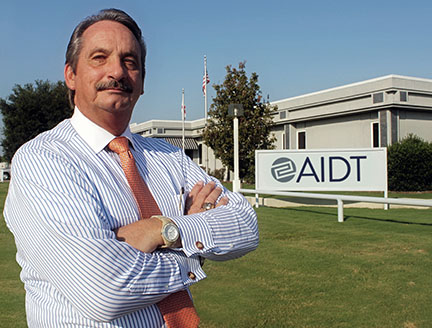 Ed Castile
Ed Castile
Alabama Department of Commerce and Director of AIDT
Q: How is the lack of labor affecting your efforts at workforce development in Alabama?
A: ”It is not simply the lack of labor, but the lack of skilled labor and/or labor with the employability skills to stick or perhaps survive when hired. However, even with all we have, thousands of young high school graduates being added each year and, frankly, they are ‘crazy smart.’ To use them, though we must harness those ‘smarts’ and talents to plug them into the workforce,” Castile said.
“However, even with all the workforce challenges, we are able to succeed today, but it requires much more time and resources to develop the workforce. As most states are doing I am sure, we in Alabama are using this ‘workforce disruption’ to be creative and innovative as we work. To not only get people off the couch, but get them skilled up to be a success when they go to work.
“Bottom line, the lack of labor/skilled labor is affecting us, sure, but as we learn how to meet the challenges the workforce presents, we are succeeding though innovation and creativity. We’ve got this!”
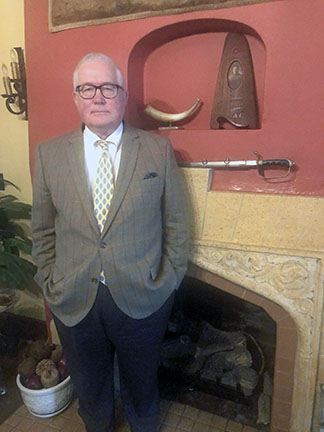 Clif Chitwood
Clif Chitwood
Director of the Great River Economic Development Foundation,
Mississippi County, Ark.
Mississippi County, Ark., is the second largest steel producing county in the U.S. and will soon be No. 1 when U.S. Steel — which announced a $3 billion deal in spring 2022 — opens two electric arc furnaces in 2024. The plant will house 900.
“This is the big one,” said Clif Chitwood, director of the Great River Economic Development Foundation. “This will be Mississippi County’s best shot to rebuild our demographic infrastructure,” said Chitwood in a recent article.
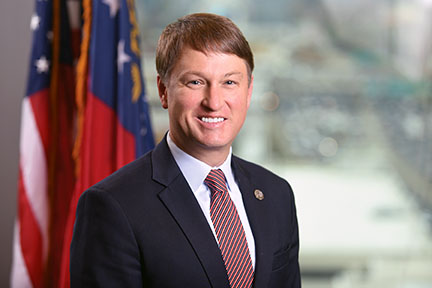 Pat Wilson
Pat Wilson
Commissioner, Georgia Department of Economic Development
Q: As written to your peer, Bob Rolfe in Tennessee, no state in the South saw more EV projects than Tennessee from 2020 to 2022. But with Rivian and now Hyundai’s over-8,000-job EV and battery plant near Savannah, there is no question Georgia captured the two biggest Kahunas, and both are located in the state. Working with two next-generation automakers building massive multi-billion-dollar plants has got to be a huge challenge. Give us an idea of those challenges.
A: “The great opportunity for Georgia is that we not only get to lead the way in creating the jobs of the future with these and other EV projects we’ve secured, but we have the opportunity to show how closely we work together at every level to respond to the needs of business in our state,” said Wilson.
“Our record with Hyundai Motor Group’s Kia plant in West Georgia played an important role in the selection of their new U.S. project. They know Georgia will work with them, especially to meet their speed-to-market and workforce training needs — which is on the mind of every business today. Georgia’s long history of planning and collaboration that helped us bring these projects to the state is also part of the collaborative spirit we’ll bring to helping Hyundai Motor Group and Rivian meet their goals with these generational projects.”
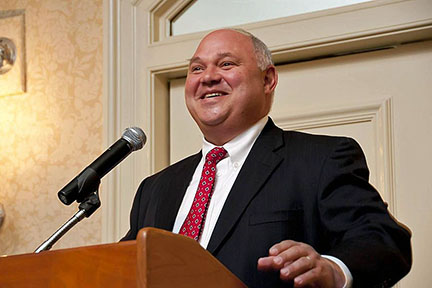 Mark Vitner
Mark Vitner
Senior Economist, Wells Fargo
Q: Mark, over the years, you have shown the uncanny ability to equally focus and make determinations regarding the overall economy, both on a macro and micro basis. In somewhat brief form, do you have a comprehensive handle on what this economy is trying to do?
A: “I think businesses, households and governments are trying to figure out what the post-pandemic economy will look like. The markets have been off all year because they feel the Fed has no choice but to reduce the amount of stimulus in the pipeline because inflation is so high” Vitner said.
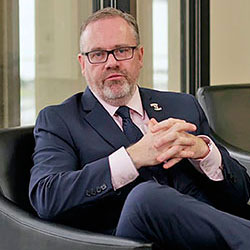 |
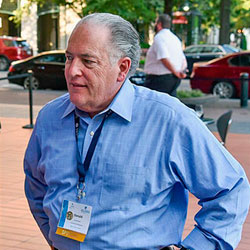 |
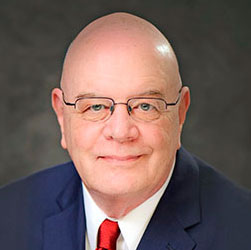 |
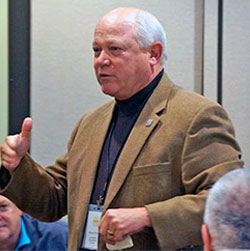 |
According to officials in Louisiana and Texas, including Michael Olivier, Don Pierson, Iain Vasey and George Swift, carbon capture will preserve the future of the petrochemical industry in those states. In Southwest Louisiana, Gulf Coast Sequestration is developing what could be the largest geologic carbon capture sequestration project in the U.S., and one of the largest in the world. With the capacity to sequester 2.7 million tons of CO2 annually, this type of project will assist industrial customers in achieving their sustainability goals and help steer our nation toward a more economically and environmentally sustainable future.
A new $3 billion Ingleside facility near Corpus Christi will strip hydrogen from natural gas and return CO2 to earth. This process will produce a cleaner energy source that’s in global demand. Is this the latest major development in the natural gas industry in Louisiana and Texas and what is its potential?
In addition, there are unspent COVID funds available — trillions — that are now easier to find and secure than earlier this year. Since 2020, the U.S. government passed three main relief packages and one supplemental package totaling $2.8 trillion followed by the $3 trillion Heroes Act. A $900 billion stimulus bill passed in December 2020. Since then, a plethora of executive actions have been issued to provide aid during the pandemic. A fifth major stimulus package, the $1.9 trillion American Rescue Plan, was signed into law March 2021.
“The point is that up until now, states and communities had to apply for grants and now those federal funds are being directed to states, counties, municipalities and school districts without a grant application. The economic development practitioner can move the needle in their respective areas by reading these measures and guiding their communities and stakeholders to how these funds can be utilized, much of which are for infrastructure improvements and training people. Here’s your chance of a lifetime to make your career,” said Michael Olivier.
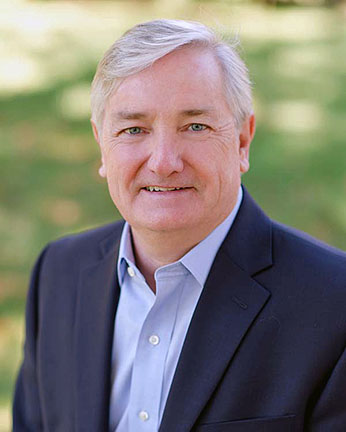 John Bradley
John Bradley
Senior Vice President of Economic Development, TVA
Q: TVA launched the megasite certification program in March 2004 in response to a growing need for large industrial properties in the South, specifically for the automotive industry. You helped lay the groundwork for TVA’s program. Did you have any idea that TVA’s Megasite certification program would be so successful?
A: “We’ve had great success with the TVA Megasite program, which has helped bring more than 18,700 direct jobs, $14.6 billion in capital investment on seven certified Megasites. The program was the first of its kind and enabled us to address the need for product suitable for large-scale development.
“From Steel Dynamics locating in Lowndes County, Miss., to Ford and SK Innovation’s Blue Oval City for electric vehicle and battery manufacturing in Haywood County, Tenn., the Megasite program has allowed for impactful economic growth that will change the landscape of these communities for generations to come. That’s part of TVA’s mission of service, and we are proud to work with our partners to support these companies by providing clean energy and reliable, low-cost power. We look forward to continuing to offer innovative solutions and programs to foster economic growth in the Valley,” said John Bradley, TVA senior vice president of Economic Development.
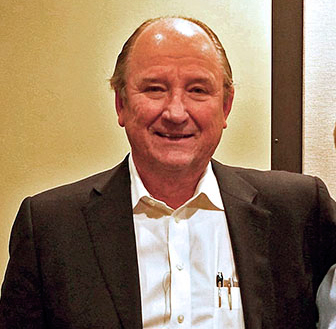 J. Michael Mullis
J. Michael Mullis
President and CEO, J.M. Mullis, Inc.
Q: You are one of the most active and effective site consultants in the world. For a variety of reasons including declining immigration and low fertility rates, a rapidly shrinking labor force in the U.S. has made it tough for the U.S. to compete with, say, Mexico, which can back-fill its labor for decades. What are the answers?
A: “Our firm continues to do a great deal of professional project selection business globally; and yes, the new industry deals for the U.S. are becoming much more complex in terms of site development elongated permitting (particularly when Federal permitting is involved); project development costs (actual construction costs have increased more than 50 percent, and material and equipment supplies are being delayed many months); qualified workforce development and maintenance; adequate utility networks (with more particular reference to higher volume electric and natural gas services); and overall increased operating costs, with daily supply chain delays and lack of volume issues,” Mullis said.
“To deal with fewer workers, companies are automating at an unprecedented rate. A 1-million-square-foot distribution center project, at a 40- to 45-foot height, that five years ago had an investment of $1 million, with 500 to 600 employees, is now a 1-million-square-foot project, now at 100-foot-plus height, with a $300 million investment, with 250 to 300 employees. That workforce also has a much higher skill set, with very good pay rates.
“A manufacturing project is now highly automated with much higher investments that will be the norm for many years, with a lower workforce number. But that workforce now has a much higher skill set than it did five-plus years ago, and the lesser number workforce is well paid.
“Our firm’s major EV-related project developments (OEM and/or battery related) are enormous in every aspect — site and facility sizes (all fully HVAC and clean room environments), with investments that easily exceed $1 billion (USD); very strong and reliable utility networks; and uniquely trained, well-paid workforces typically in excess of 1,500 to 2,000. Such new technology projects with these higher levels of really well-paid employee requirements are playing havoc with the more traditional industries maintaining their existing workforces,” said Mullis.
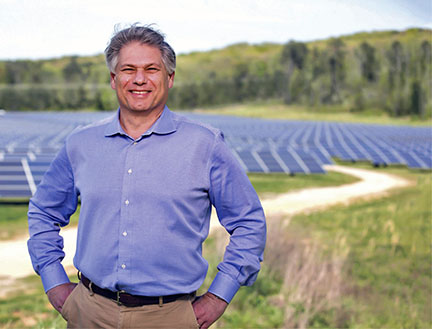 Matt Kisber
Matt Kisber
CEO, Silicon Ranch
Q: Can you give us an update on renewable solar energy production in the South?
A: “When we launched Silicon Ranch more than a decade ago, my co-founders (former Tennessee Governor Phil Bredesen and former Tennessee Commissioner of Revenue Reagan Farr) and I shared a belief that solar energy projects — when developed responsibly — can play a meaningful role in supporting economic development and deliver enduring, long-term value for communities.
“In the years that have followed, we have seen firsthand how access to renewables has become an increasingly important factor for businesses as they consider states in their site selection process, and accordingly, it has become self-evident that any successful economic development strategy must treat renewable energy procurement as a priority. The solar industry has both an opportunity and an obligation to collaborate in partnership with economic development agencies to leverage the value of what we do to empower and strengthen the communities where we locate.”
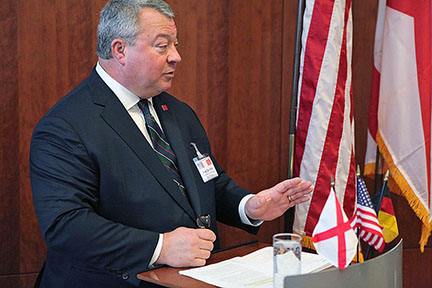 Greg Canfield
Greg Canfield
Secretary, Alabama Department of Commerce
Q: How do you see inflation and the latest move by the Federal Reserve Bank raising rates by 75 basis points impacting business investment decisions over the near term?
A: “Clearly the rapid rise of inflation has the Fed spooked. The latest news shows retail sales slipped 0.3 percent in May, and if consumers continue to pull back on spending, we could see significant declines in the purchase of both consumer and durable goods. That would not bode well for future business investment in new facilities and equipment.
“The Fed has already signaled that July could bring another increase in interest rates. If the Federal Reserve’s actions don’t slow inflation, we may find ourselves in a perfect storm of declining consumer spending and higher costs of money for capital projects. That could result in a noticeable slow-down in economic development project activity.”
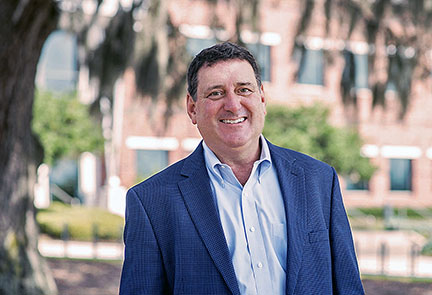 Gray Swoope
Gray Swoope
Former Secretary of Commerce, Florida; Executive Director, Mississippi Development Authority;
CEO, Vision First Advisors
Q: There is word on the street that the U.S. tech industry is in big trouble. Bilal Zuberi, a partner at the venture capital firm Lux Capital, was quoted in BusinessWeek saying, “Startups need to begin slashing costs, which will almost invariably mean job cuts. The world is falling apart,” he says, “and we need to act accordingly.” What are you seeing at VisionFirstAdvisors, Gray?
A: “My friend, mentor and former colleague, the late Leland Speed, talked about how ‘deal creep’ kills projects. Unfortunately, there are a large number of startup projects that are having trouble securing additional capital pushing milestones out. As a result maintaining cash and cutting cost (jobs) are essential to survival.”